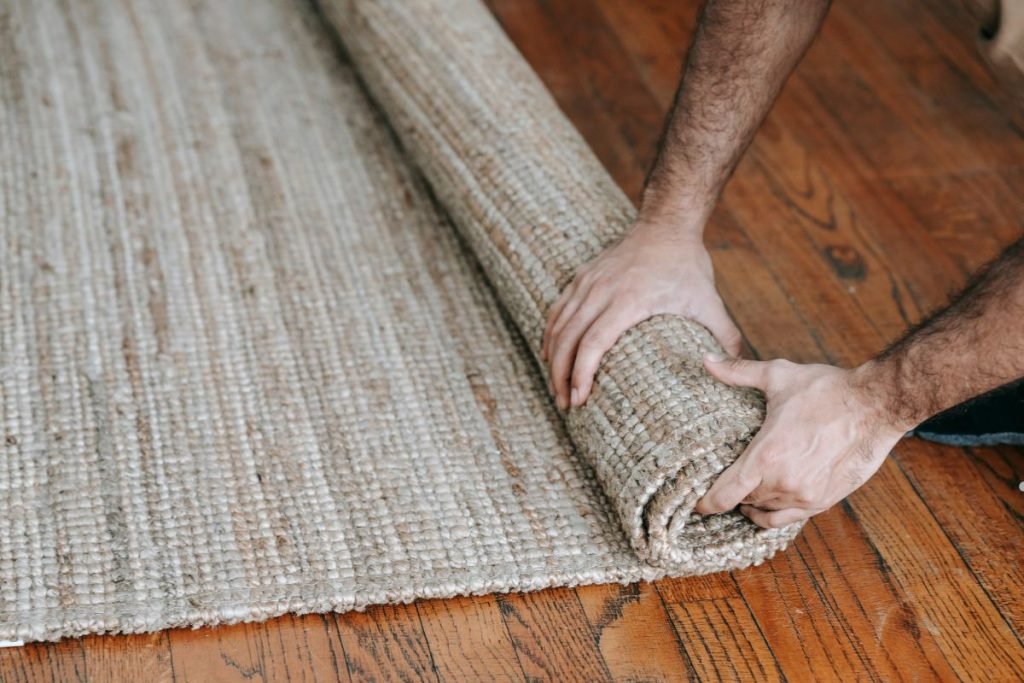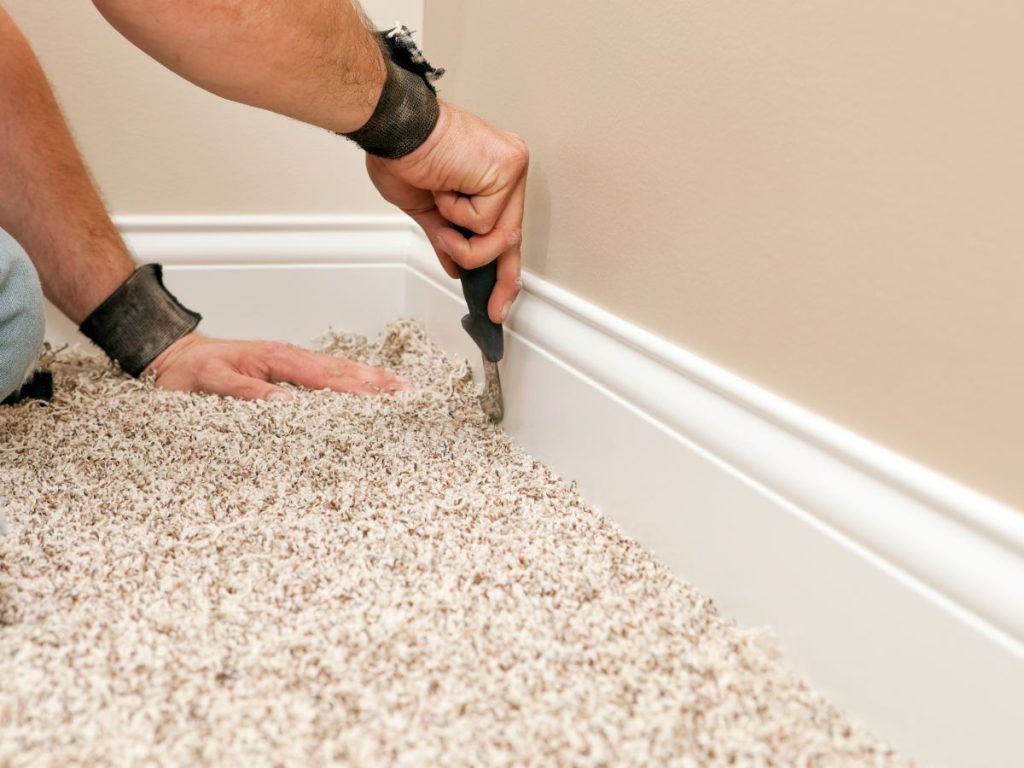
Carpet installation is more than just laying down a floor covering—it’s about creating a comfortable, safe, and visually pleasing space in your home. While it might be tempting to tackle this as a DIY project, proper installation requires planning and skill to ensure your carpet lasts for years. From choosing the right materials to preparing your space and caring for your new carpet, every step matters. Let’s explore why getting it right the first time is so important.

Key Takeaways
- Professional installation ensures your carpet looks great and lasts longer.
- DIY carpet installation often leads to errors that can be costly to fix.
- Proper subfloor preparation and accurate measurements are essential for a flawless finish.
- The right underlayment improves comfort and extends the life of your carpet.
- Routine maintenance and occasional professional cleaning keep your carpet in top shape.
The Role of Professional Expertise in Carpet Installation
Why Professional Installation Matters
When it comes to carpet installation, the difference between a professional job and a DIY attempt is night and day. Professionals have the training and experience to deliver a flawless result, ensuring your carpet not only looks great but lasts for years. They know how to handle tricky corners, uneven subfloors, and challenging layouts that can make or break the final outcome. Plus, they come equipped with specialized tools that most homeowners simply don’t have.
Common DIY Mistakes to Avoid
Many homeowners think carpet installation is as easy as rolling it out and cutting it to fit. Unfortunately, this often leads to common mistakes like:
- Misjudging room measurements and wasting material.
- Failing to stretch the carpet properly, which causes wrinkles and bulges over time.
- Overlooking the importance of a smooth, prepared subfloor.
These errors can not only ruin the look of your carpet but also shorten its lifespan, leading to costly repairs or replacements down the road.
The Value of Skilled Installers
Hiring skilled installers means you’re investing in more than just a good-looking floor. Experienced professionals know how to align patterns, secure seams, and ensure a snug fit that prevents wear and tear. They also understand which installation method—whether glue-down, stretch-in, or tackles—is best for your specific carpet type and home environment. In the end, their expertise saves you time, stress, and money, while giving you peace of mind that the job is done right the first time.
A well-installed carpet is more than a floor covering; it’s the foundation of your home’s comfort and style. Trusting professionals ensures that foundation is solid, beautiful, and built to last.
Key Benefits of Proper Carpet Installation
Enhanced Aesthetic Appeal
A properly installed carpet can transform a room. When done right, it lies flat without any wrinkles or bumps, giving your space a clean and polished look. This seamless appearance can make a room feel more inviting and cohesive. Plus, professional installation ensures the carpet’s pattern (if it has one) aligns perfectly, which is something DIY jobs often overlook.
Improved Carpet Longevity
When carpets are installed correctly, they last longer. Missteps like loose edges or uneven stretches can lead to premature wear and tear. Proper installation minimizes these risks, so your carpet holds up better against foot traffic and daily use. Think of it as giving your carpet a strong foundation to stand the test of time.
Increased Comfort and Safety
A well-installed carpet isn’t just about looks; it’s about feel and function too. Proper installation ensures the carpet stays secure, reducing the risk of trips or slips. And let’s not forget about the comfort factor! With the right underlayment and expert installation, your carpet feels softer and more cushioned underfoot, making your home cozier and safer.

Steps to Ensure a Flawless Carpet Installation
Accurate Room Measurements
Before you even think about cutting the carpet, you need to measure the room. And not just a quick length and width—this means accounting for every corner, alcove, and odd angle. Precise measurements are key to avoiding unnecessary waste or, worse, running out of material mid-installation. Use a tape measure and double-check your numbers. For larger or more irregular spaces, consider professional help to get it right.
Subfloor Preparation Essentials
The subfloor is like the foundation of a house—it’s got to be solid. Start by clearing any debris, dust, or old adhesive. If there are cracks, holes, or uneven areas, fix them. A smooth, clean subfloor ensures the carpet lays flat and stays put over time. Skipping this step can lead to lumps, bumps, and even carpet damage down the road.
Choosing the Right Underlayment
Think of underlayment as the unsung hero of carpet installation. It provides cushioning, reduces noise, and adds insulation. But not all underlayment’s are created equal. Choose one that matches your carpet type and the room’s needs. For example, thicker padding might be great for bedrooms but could be a tripping hazard in high-traffic areas. A good underlayment not only makes the carpet more comfortable but also extends its life. For more durable flooring options, explore our epoxy flooring
How Proper Installation Impacts Carpet Durability
Preventing Premature Wear and Tear
When a carpet is installed the right way, it’s less likely to show signs of wear too soon. Poor installation can lead to frayed edges, loose fibers, and uneven surfaces, which makes the carpet age faster. A properly stretched and secured carpet stays in place, reducing the chances of folds or ripples that wear out underfoot. Think of it as giving your carpet a solid foundation to handle daily use.
Maintaining Carpet Stability Over Time
A well-installed carpet doesn’t just look good—it stays where it’s supposed to. Stability is key here. If the carpet isn’t stretched tight or secured firmly, it can shift, buckle, or even develop wrinkles over time. These issues don’t just ruin the look; they can also create tripping hazards. A stable carpet installation ensures the flooring remains flat and smooth, even in high-traffic areas. For more durable and versatile options, check out our Laminate Flooring
The Role of Stretching and Securing
Stretching and securing might sound like minor steps, but they’re actually critical for durability. Installers use tools like power stretchers to eliminate slack, making sure the carpet lies flat without any bumps. Edges and seams are tightly secured to prevent them from unraveling or pulling up over time. This meticulous process is what keeps your carpet looking fresh and functioning well for years.
A properly installed carpet is an investment in both style and longevity. It’s not just about how it looks today but how it holds up tomorrow. If you need help or have any questions, feel free to Call Us.
Preparing Your Home for Carpet Installation
Before the carpet installers arrive, it’s crucial to clear the area where the carpet will go. Start by removing furniture, décor, and any personal belongings. Don’t forget to box up fragile items near the installation zone to keep them safe. While baseboards and moldings usually stay in place, clearing the floor space ensures the job can proceed smoothly. A clutter-free area speeds up the process and reduces the risk of damage to your items.
Addressing Subfloor Issues
The condition of your subfloor plays a huge role in how well your carpet will perform. Inspect the subfloor for any signs of unevenness, cracks, or damage. If you’re unsure, a professional installer can help assess and repair it. A clean, level subfloor prevents future problems like bumps or premature wear. Think of it as laying a solid foundation for your carpet.
Selecting the Ideal Carpet Material
Choosing the right carpet material depends on the room’s purpose and foot traffic. For high-traffic areas like living rooms, consider durable materials like nylon or polyester. Bedrooms, on the other hand, can benefit from softer, plush options like wool. Make sure the carpet complements your existing décor and fits your lifestyle.
Preparing your home for carpet installation isn’t just about clearing the space—it’s about setting the stage for a lasting, comfortable, and stylish upgrade. Learn more about carpet tile flooring
Post-Installation Care for Long-Lasting Carpets
Inspecting the Finished Installation
After your carpet is installed, take a close look at the details. Walk across the surface and feel for any uneven spots or bumps. Check that the edges are securely attached, and seams are invisible. If you notice anything off, address it immediately with your installer. This step is crucial to ensure your carpet’s longevity and performance.
Routine Maintenance Tips
Keeping your carpet in top shape isn’t a one-time task—it’s ongoing. Here’s what you can do:
- Vacuum regularly to remove dirt and debris that can wear down fibers.
- Tackle spills immediately with a clean cloth and a mild cleaning solution to avoid stains.
- Schedule professional cleaning every 12–18 months to refresh and deep clean your carpet.
When to Seek Professional Cleaning
Even with regular care, your carpet will need a deeper clean over time. Look for signs like dullness, lingering odors, or stubborn stains that vacuuming can’t fix. Professional cleaning not only restores your carpet’s appearance but also extends its life.
A well-maintained carpet doesn’t just look good—it feels good underfoot and holds up better over time. A little effort now saves you from bigger headaches later.
The Cost-Effectiveness of Professional Carpet Installation
Avoiding Costly DIY Errors
At first glance, DIY carpet installation might seem like the cheaper way to go. But here’s the catch: mistakes can pile up quickly, and fixing them often costs more than hiring a pro from the start. Misaligned seams, uneven surfaces, or poorly stretched carpets are just a few of the issues that can arise. Professional installers ensure precision, saving you from having to redo the job—or worse, replace the carpet entirely.
Maximizing Carpet Lifespan
A properly installed carpet doesn’t just look good; it lasts longer. Poor installation can lead to premature wear, loose edges, and wrinkles that compromise the carpet’s durability. Professionals know how to handle different carpet materials and ensure they’re installed to withstand foot traffic and everyday use. This not only saves you money on replacements but also keeps your home looking great for years.
The Long-Term Value of Expertise
Think of professional installation as an investment. While the upfront cost might be higher, the long-term benefits far outweigh it. A well-installed carpet requires less maintenance, reducing ongoing costs. Plus, many professional services include warranties, giving you peace of mind that any issues will be addressed without additional expenses. In the end, you’re not just paying for the labor—you’re paying for quality and reliability.
Wrapping It Up
Getting your carpet installed the right way is more than just a home improvement task—it’s an investment in comfort, style, and durability. A properly installed carpet not only looks great but also holds up better over time, saving you from headaches down the road. Whether you’re aiming for a cozy living room or a polished office space, taking the time to ensure the job is done right makes all the difference. So, when it’s time to lay down that new carpet, consider leaving it to the pros. Your floors—and your peace of mind—will thank you.
Frequently Asked Questions
Why is professional carpet installation better than DIY?
Professional carpet installation ensures a perfect fit, reduces the risk of mistakes, and extends the life of your carpet. Experts have the tools and knowledge to handle challenges that DIYers might overlook. If you have any questions or need assistance, feel free to Call Us.
What happens if a carpet is not installed properly?
Improper installation can lead to wrinkles, uneven surfaces, and premature wear and tear. It may also void the carpet’s warranty.
How can I prepare my home for carpet installation?
Clear the space of furniture, remove old flooring if necessary, and address any subfloor issues. Ensuring the area is clean and ready will make the installation smoother.
How long does professional carpet installation take?
The time varies depending on the room size and complexity, but most installations can be completed within a day or two.
What is the role of underlayment in carpet installation?
Underlayment provides cushioning, improves comfort, and helps with insulation. It also extends the life of the carpet by reducing wear.
How can I maintain my carpet after installation?
Regular vacuuming, prompt spot cleaning, and professional deep cleaning every 12-18 months will keep your carpet looking great and lasting longer. If you need assistance or more information, feel free to Contact Us

